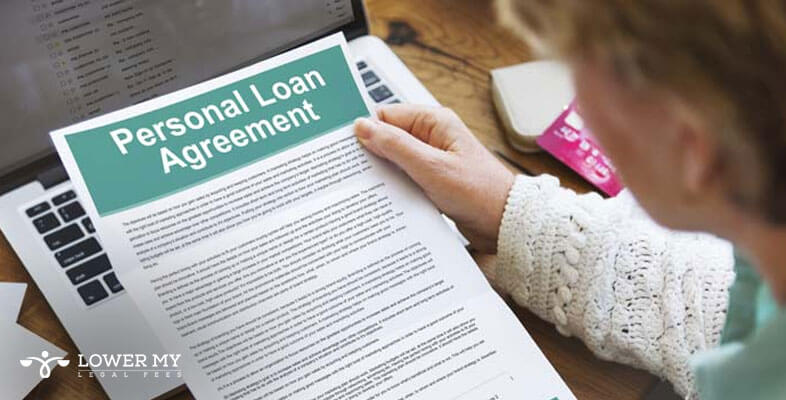Borrowing has become part and parcel of almost every human being. You may need a loan to cover medical emergencies, pay college fees, and buy a home, car, or any other asset. Because of this, you will need a personal loan agreement to guarantee its payment.
A loan agreement is a binding contract that formalizes the loan process between two or multiple parties. There are different kinds of loan agreements depending on the type of loan that you want to take. This article will help you to understand what it is and how to draft one.
The Purpose Of A Loan Agreement

The loan contracts define what the involved parties agree to, the responsibility of each part, and the duration of the agreement. The loan agreement has to comply with federal and state regulations. The governing authorities protect the interests of both the borrower and the lender especially if one of the parties fails to honor the agreement.
The terms of the personal loan agreement differ depending on the type of loan that you are taking. Once the borrower and lender sign a loan contract, it is proof that they have a commitment to use the funds in a particular way. The borrower should also repay the loan within the stipulated timelines.
The Other Uses of A Loan Agreement
It is a big financial commitment to borrow money. That is why you need a formal process to generate a positive outcome on each side. The terms and conditions of the loan are always standard fares.
The personal loan agreement proves that the amount of money involved in the transaction is a loan and not a gift. The agreement will also prevent any form of arguments over the prevailing terms and conditions.
In case the matter goes to court, the loan agreement will come in handy. The court will use it to confirm whether the parties are meeting the terms of the loan.
If the loan will be paid with an interest, one party may wish to have an amortization table. This shows how the borrower will repay the loan over time including how much and the interest that is involved in each payment. Therefore, when borrowing or lending, it is good to have a legal personal loan agreement as part of the process.
Legal Terms
There are so many legal terms that are used when making a personal loan agreement. These terms relate to the collateral, loan security, interest rate, default or breach of contract, and repayment schedule amount among other conditions.
Certain standard legal terms are involved when it comes to making loan agreements. The main ones include:
Choice of Law
This refers to the difference in laws in two or several jurisdictions. For instance, the laws that govern a particular loan agreement in a state may be different from what applies in another state. The other name for this term is ‘conflict of law.’
Involved Parties
This is the personal information about the lender and borrower that should be stated clearly in the loan agreement. It includes the addresses, names, phone numbers, and social security numbers of both parties.
Severability Clause
This term states that the contract terms are independent of one another. Therefore, if one of the conditions of the contract is deemed to be unenforceable by the law court, it does not imply that all the other conditions are unenforceable.
Entire Agreement Clause
The term defines what the final agreement will be and it supersedes any other agreements that were made previously during the negotiations, whether oral or written. In other words, it is the final say and anything that was written or said before does no longer applies.
There are so many other terms and conditions that you need to understand before signing a personal loan agreement. As you know, ignorance is not a defense when dealing with legal matters. That is why it is important to go through each term and condition of the loan. It is good to read the whole document thoroughly in order to make an informed decision. Some of the things to pay close attention to are:
- Interest rate determination
- Contract length and amortization
- Prepayment fees and penalties
- Breach and default
- Mandatory arbitration
- Usury and predatory productions
- Promissory notes
It is good to have a clear understanding of each of these terms as used in a personal loan agreement.
How You Can Write A Personal Loan Agreement?
1. Starting The Document
First, include the date at the page top. If the personal payment agreement that you are creating is informal before loan disbursement, only fill in the date once you receive the funds.
2. Write The Loan Terms
State what the purpose of the personal loan agreement is and the terms of returning the loan amount. For instance, if you are borrowing $2,000,000 million to buy land and you pay $500 per month, make sure you write it down. You may say something like; “I, Smith Christine, agree and understand that I Owe Mr. Jim Leonard $2,000,000. I agree to be paying $500 per week until the loan is paid in full. ”
3. Document Date
This may appear to be common sense but it is something that you can easily overlook. The loan repayment rides on the date that you created the personal loan agreement. Choose a starting and finish date for the loan repayment and put it down in writing. Something like; “The repayment will begin on 1st Monday of January 2021 and get completed by last Monday of December 2023.”
4. Statement Of Agreement
Write “The borrower and lender both agree to the terms listed above.” These are typically a few lines that are listed below the repayment schedule in order to draw attention to the fact that each person agrees to the terms of the loan.
5. Sign The Document
It is hard to enforce a personal loan agreement that does not have a signature. Print the names of the lender and borrower below the statement agreement. Leave space for each party to sign in the agreement.
6. Record The Document
Go down to the office of the recorder and record the personal loan agreement. This will protect the loan in case either party loses the paperwork and it will have that psychological effect of feeling “real.”
Conclusion
This article explains a clear procedure on how to write a personal loan agreement. It also tells you what a loan agreement is and its purpose. It is the only document that you need to make the lending process official. Without a signed agreement, it will be hard even to solve a dispute in a law court.






